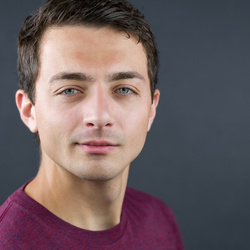Composition can be a challenging aspect to master in landscape photography. Even the most breathtaking view doesn’t automatically result in a great photo. The challenge lies in translating that view into a compelling image.
Coming to you from Gareth Evans with Park Cameras, this insightful video offers valuable tips on how to tackle landscape composition. Evans starts by highlighting the importance of taking a moment to soak in the landscape before you even think about picking up your camera. This isn’t just a meditative exercise; it’s about understanding the scene, identifying what stands out, and figuring out what story you want to tell through your image. According to Evans, this approach helps you connect with the landscape, leading to more meaningful compositions.
Evans then dives into the process of identifying the main subject of your photo. He emphasizes the need to determine the anchor point within the frame, which is where the viewer’s eye will naturally rest. This is crucial because the anchor point acts as the foundation of your composition. Once you’ve identified it, the rest of the elements in the landscape can be arranged around it. Evans also discusses how the choice of lens, whether zoom or prime, and your position relative to the subject can significantly influence the composition. He suggests experimenting with different angles and perspectives to see what works best for the scene.
An interesting point Evans makes is the importance of being flexible and open to changing your initial plan. He shares an example of a time when he intended to photograph a famous landmark but ended up dissatisfied with the shots. Instead, he found a more compelling image by focusing on the surrounding elements that told a better story. This flexibility is key in landscape photography, where conditions can change rapidly, and your preconceived ideas might not always align with the reality in front of you.
This video doesn’t just cover the basics; it offers practical advice on how to think about composition in a way that enhances your ability to capture the landscape's beauty. Check out the video above for the full rundown from Evans.
And if you really want to dive into landscape photography, check out our latest tutorial, "Photographing the World: Japan With Elia Locardi!"






I agree that taking in the location first is the most important part of setting a composition. My best images usually come when I scout the scene thoroughly and take test shots of all the options. Then I can scroll through those 5-10 different shots and see which one grabs my attention most before I've committed to any one of them. This usually allows me to get the best shot without having a "first found" bias that often plagues landscape photographers.
I watched this while in the Rocky Mountains. I tried out some of the tips... Thanks for the content! For these first 2... I was trying to figure out whether the foreground flowers should be in focus or out? Thoughts? I've got about 120 different focus points, f-stops, etc. No cropping done yet. I left room for 16x9 if better... Too cluttered? For the close up with clouds, it hit me as stark. I used my 100-400 z Nikkor. Seemed like the cloud is what jumped out at me. Thoughts on this one? Then my only shot with a person that seems to say tranquility more with the person without? Thanks for your inspiration! -Ken